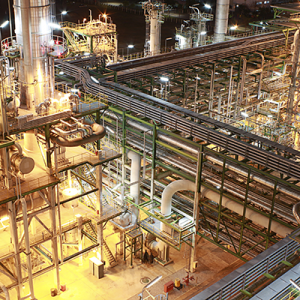Indian Oil Corporation (IOC) currently operates 10 of the country’s 20 oil refineries. According to information available on its website, IOC has initiated a number of schemes towards increasing its emphasis on project execution in compressed schedules as per world benchmarking standards. In addition to grassroots refineries, such as the Paradip refinery currently in startup, schemes for improvement and increased profitability through debottlenecking, modifications and introduction of value added products are under way.
The 15 MMTPA (300,000 bpd) Paradip refinery project (Rs. 3150 crore; $474 million at spot rate) is currently in the completion stage, with limited production of diesel, kerosene, LPG and other products that began on November 22, 2015. Some of the primary units at the facility include a crude/vacuum distillation unit, hydrocracking unit, a delayed coking unit and other secondary processing systems. This will be the most complex facility in India with 100% conversion of residue and final products meeting stringent specifications.
IOC also noted integration of a 680 KTA (13,600 bpd) polypropylene unit at the Paradip complex by September 2017, based on the proprietary Spheripol technology from Basell, Italy. The unit will be capable of producing different grades of polypropylene, but will commence with production of only homo grade initially. Other facilities planned for the future at Paradip include a coker LPG treater unit, warehouse for polypropylene storage, flare system, cooling tower, etc.
Another major project that IOC expects to complete by December 2017 is the distillate yield improvement project at the Haldia refinery. The project, primarily centered on a 1.7 MMTPA (34,000 bpd) delayed coker unit and a 1.4 MMTPA coker gas oil hydrotreater which will help mitigate the declining demand for high-sulfur fuel oil (bunker fuel) by upgrading to higher value products in the distillate range, as well as LPG. IOC says that the project will actually improve distillate yield by about 4-5%. Other linked treating units and associated assets include a 70 TMPTA coker LPG treater unit, sulfur recovery unit (SRU), sour water stripper unit and amine regeneration unit. The coke drums are 106700mm / 35 feet in diameter and 45520mm/149 feet tall and weigh 650 MT.








Leave a Reply
You must be logged in to post a comment.